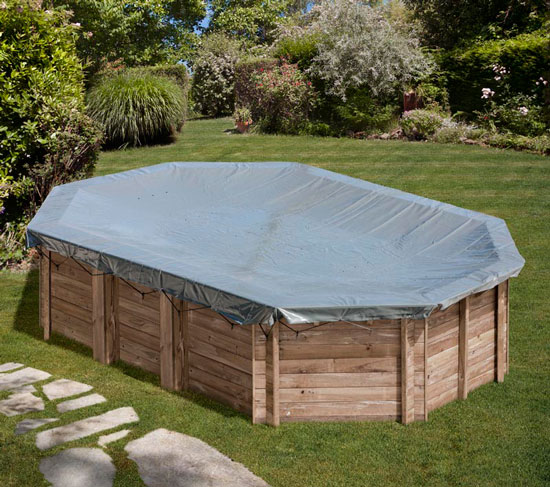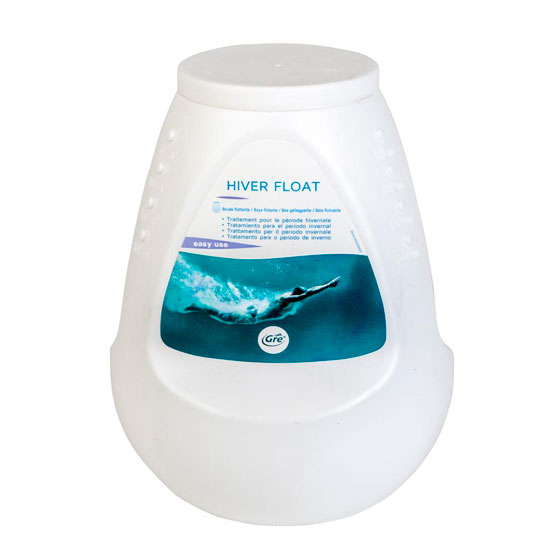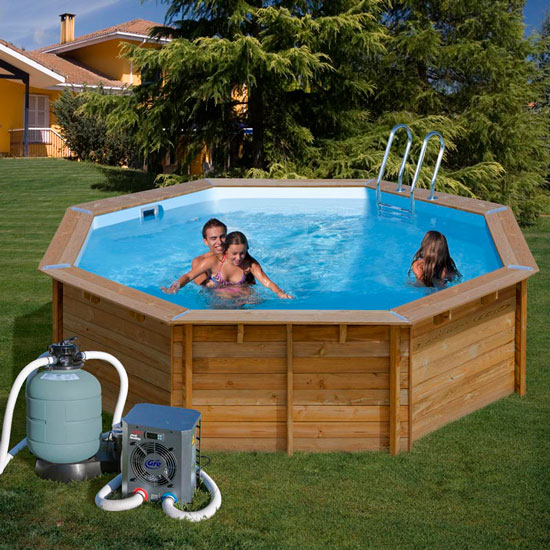The month of September, for many indicates the end of their vacations, and although the autumn does not start until September 23rd this year, for a large majority, it determines the end of summer and the enf of the swimming pools.
During the summer, we are concerned about the maintenance of the swimming pools and the quality of the water to disconnect, enjoy the sun and a good dip with total tranquillity. However, usually when the cold arrives, we forget about water care and pool maintenance.
What should we do when temperatures drop? Should we empty the pool or leave it with water?
Gre Pools, we do not recommend emptying the pool after each summer, and here are a few reasons why:
Huge spending
Although there are pools of different sizes and shapes, the minimum water volume is about 10 m3. If you drain the pool every season that means throwing away many litres of water that will have to be refilled for the pool. Also, there is the expenditure on chemicals needed to make the water in optimal condition again next season.
Structural problems
Emptying the pool eliminates the pressure that water puts on the bottom and walls, which can cause problems in the pool structure, and the ground below it.
Environmental problems
In addition to the quantity of litres of water being discarded, the pool water contains various chemicals that could be harmful to the environment when dumped in the ground or the drain.
There will come a time when it is necessary to empty the pool, by leaks in the liner, breakdowns, deep cleaning of skimmers and ducts, complete cleaning of the bottom and walls or waiting for a winter very cold in which water may freeze and may cause serious damage to the pool structure.
However, to conserve the pool during the winter, there is no need to drain the water. There are several ways to keep the swimming pools in perfect condition during the cold months without emptying them, as well as enjoying them for longer.
Once the end of the summer approaches, it’s time to prepare the pool to hibernate. The maintenance of the pool in winter can be done easily thanks to winter products and accessories such as the covers.
Tips for maintaining and protecting the pool during the winter:
- Cleaning bottom and walls of the pool. Clean the interior surface of the pool before the cold month.
- Emptying the skimmers. Clean skimmers of all types of stored waste.
- Chemical product to hibernate. This type of product will allow a faster tuning of the pool with the return of the sunny months and, in addition, they’ll prevent the formation of algae and lime inlays.
- Cover the pool with a pool cover. If you do not have a pool cover, it is essential to protect the state of the water and the pool in the cold months, preventing the pool from filling with dirt, leaves and insects, as well as protecting the pool from ice. Without a pool cover, maintenance during the winter is lengthened.
- Water level. The water level should be reduced below the skimmers.
- Remove the external elements of the pool. Remove stairs and showers to avoid deterioration of inclement weather.
Every so often, like in summer, it is necessary to clean the bottom and walls of the pool, hopefully, if you have a robot cleaner, you can put it to work. Check the pH of the pool water, and if not correct, regulate it, with pH boosters or pH reducers. Finally, keep filters and skimmers clean.
Therefore, once the last days of sunshine arrive it is convenient to leave the pool clean, throw the wintering chemicals in the water, and cover the pool to keep it throughout the winter and facilitate its tune-up in summer.
Another reason to enjoy your swimming pool longer
Usually, once the month of September has started it means the end of the pool season for many of us, but we can extend the bathing season and enjoy the pool for a few more months with heat pumps.
The heat pump is one of the most economical and effective alternatives for controlling the temperature of the pool water. The pump transforms the outside air into energy to heat the water.
Enjoying warm water is possible with the heat pump as long as the ambient air temperature is higher than 12 °C (and is below 42 °C).
In conclusion, we can extend the number of days to soak with the heat pump for swimming pools and, once the temperatures approach 15 °C, prepare the swimming pool to hibernate without the need to empty the water.
Subscribe to Gre’s blog and follow us on social media for more information on winter pool maintenance and winter chemicals!



Buenos días
En el artículo se explica cómo invernar la piscina, pero no se explica qué hacer con la depuradora y tubos. Yo opto por retirarlos, limpiarlos y guardarlos en seco, es correcto? además en mi zona suele haber días de muy bajas temperaturas.
gracias
I bought one of your pool heater the HPM20. But my coils builds up ice and stays frozen. I leave it running for hours and it just throws cold water back in the pool. I don’t what to do anymore. I’ve tried contacting the seller but get no response. The seller is a company called swiminn. If you can help me with this matter I would greatly appreciate it.
Hello,
Please always empty the water in heat pump during winter time or when the ambient temperature drops below 0℃, or else the Titanium exchanger will be damaged because of being frozen, in such case, your warranty will be lost. If you prefer it, you can contact with our after-sales service; you can attaches any photo of your damaged product: https://www.grepool.com/en/after-sales